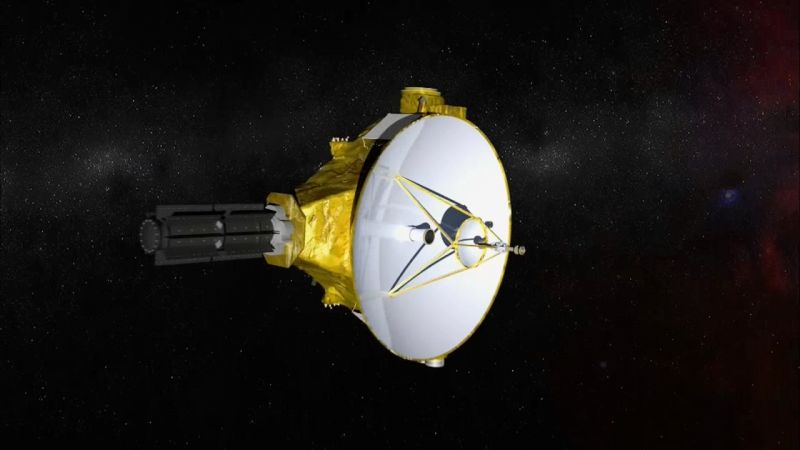In Pluto and Beyond: the New Horizons spacecraft attempts to fly by a mysterious object known as Ultima Thule, believed to be a primordial building block of the solar system. Three years after taking the first spectacular photos of Pluto, New Horizons is four billion miles from Earth, trying to achieve the most distant flyby in NASA’s history. If successful, it will shed light on one of the least understood regions of our solar system: the Kuiper Belt. NOVA is embedded with the New Horizons mission team, following the action in real time as they uncover the secrets of what lies beyond Pluto.
Pluto and Beyond
The New Horizons team used the Hubble Space Telescope to search for its post-Pluto, Kuiper Belt flyby target. Using observations made with Hubble on June 26, 2014, the science team discovered an object that New Horizons could reach with its available fuel. The object was subsequently designated 2014 MU69, given the minor planet number 485968 and, with public input, nicknamed “Ultima Thule” (which means “beyond the known world”).
Ultima Thule is located in the Kuiper Belt , beyond the orbit of Neptune. At 12:33 a.m. (EST) on January 1, 2019, New Horizons will fly by Ultima Thule at a distance of 3,500 kilometers. At this time, Ultima Thule will be almost 6.5 billion kilometers from the Sun, making this the most distant planetary flyby in history, and the first close-up look at a solar system object of this type.
Ultima Thule measures approximately 30 kilometers in diameter, and is irregularly shaped. In July 2017, Ultima Thule passed in front of a star as seen from Earth (known as a stellar occultation), allowing astronomers to determine that its shape is most likely a contact binary (two touching bodies) or a close binary system (two objects that are orbiting each other).
We won’t know what Ultima Thule’s surface looks like until after New Horizons sends back the first close-up pictures, although based on observations of similar-sized solar system objects, it will almost certainly display impact craters. The lighting at its surface is very dim, as it receives only about 0.05% of the light from the Sun that Earth does. We do know that Ultima Thule has a reddish color, probably caused by exposure of hydrocarbons to sunlight over billions of years.




